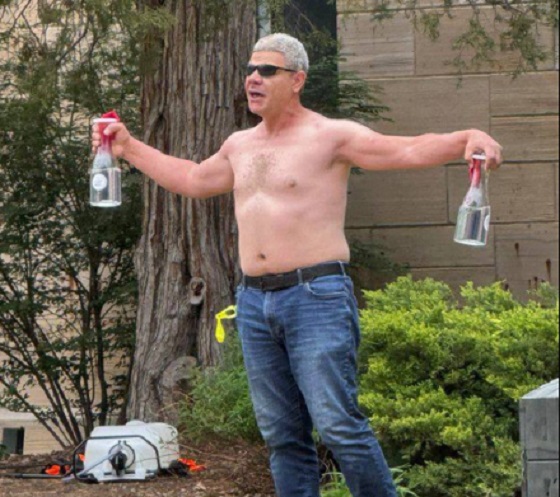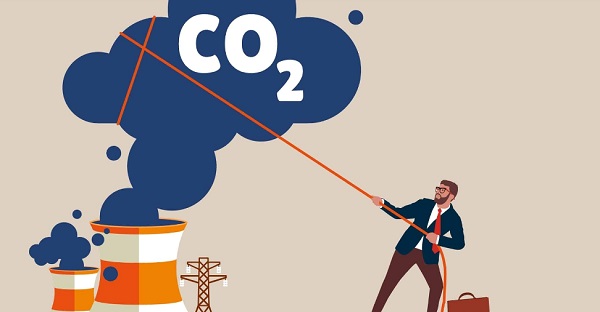Crime
Terror in Boulder: Woman set on fire during pro-Israel hostage walk

Quick Hit:
A suspected terrorist launched a violent, anti-Israel attack Sunday in Boulder, Colorado, setting a woman on fire and injuring five others during a peaceful event honoring Israeli hostages.
Key Details:
-
The attack occurred around 1:26 p.m. at the Pearl Street Mall during a weekly walk organized by “Run For Their Lives,” a group advocating for the release of Israeli hostages still held by Hamas.
-
Witnesses say the suspect, Mohamed Sabry Soliman, was waiting outside the courthouse with bottles of a clear liquid, which he ignited and threw at the group.
-
One elderly woman was engulfed in flames, and all six victims—aged 67 to 88—suffered burn injuries. At least two were medevaced, and one remains in critical condition.
Diving Deeper:
Sunday’s attack in Boulder is now being investigated as an act of terrorism, with the FBI and Department of Homeland Security confirming that the suspect, Mohamed Sabry Soliman, targeted a peaceful pro-Israel gathering with the intent to cause harm.
The event, organized by “Run For Their Lives,” began at 1 p.m. and traced a route through Pearl Street before stopping near the downtown courthouse. That’s where Soliman reportedly emerged with what appeared to be bottles filled with a flammable substance. Witnesses say he ignited the liquid and hurled it at participants, shouting phrases such as “Free Palestine” and “They are killers! How many children you killed?” One woman was seen rolling on the ground to extinguish flames consuming her body.
Boulder Police Chief Steve Redfearn said during a press conference that emergency calls began flooding 911 moments after the attack began. Officers arrived quickly and found several victims with serious burn wounds. Soliman was identified at the scene, taken into custody without resistance, and hospitalized with minor injuries.
FBI Denver Special Agent Mark Michalek confirmed that federal authorities are investigating the incident as a terror attack, stating, “This is a targeted act of violence…Sadly, attacks like this are becoming too common across the country.” DHS Secretary Kristi Noem echoed that assessment Sunday evening, calling the attack a “terrorist attack” and affirming the agency’s involvement in the investigation.
Colorado Governor Jared Polis condemned the attack and said he was “closely monitoring” the situation. “My thoughts go out to the people who have been injured and impacted by this heinous act of terror,” he wrote on X. “Hate-filled acts of any kind are unacceptable.”
Photos circulating online showed a shirtless man holding bottles of liquid shortly before being detained. The Boulder Police Department has urged the public to avoid the area and has not released further details.
The attack comes less than two weeks after a deadly shooting outside the Capital Jewish Museum in Washington, D.C., where two Israeli Embassy staffers were killed by a suspect also shouting “Free Palestine.” The organization Combat Antisemitism responded to both incidents by warning of a troubling surge in anti-Jewish violence and rhetoric.
Crime
Canadian Sovereignty at Stake: Stunning Testimony at Security Hearing in Ottawa from Sam Cooper

Canada’s Border Vulnerabilities: Confronting Transnational Crime and Legal Failures
The Bureau has chosen to publish the full opening statement of founder Sam Cooper before the House of Commons Standing Committee on Public Safety and National Security, during the session titled “Canada–United States Border Management,” held on Tuesday, October 7, 2025, and webcast live at https://www.ourcommons.ca/
https://www.ourcommons.ca/Committees/en/SECU/Meetings?utm_source=substack&utm_medium=email
I offer these remarks and recommendations with humility. I’m still learning every day. I speak regularly with numerous law-enforcement and security professionals in both the United States and Canada. For over a decade, I’ve focused professionally on the threats that transnational crime poses to Canada’s borders, institutions, and people, alongside deep reporting on our financial and legal vulnerabilities to threat networks that often include ties to hostile state activity. Canada’s recent terror designation of the India-based Bishnoi gang is important. But that particular action recognizes only one facet of the many-sided transnational fentanyl, human-trafficking, Chinese-supplied chemical precursor, weapons-trafficking, terror and extremism threats that I will discuss today.
Across hundreds of interviews with Canadian and U.S. experts, I have come to a conclusion: many Canadians — including citizens, lawmakers, and judges — do not yet fully understand the scope and nature of the problem, and also seem defensive in engaging it. And if we don’t understand it, we cannot solve it.
In these politically divisive times, I hope I can add value by relaying, clearly and fairly, what professionals on both sides of the border are saying about the cultural, legal, and political differences that impede cooperation between the United States and Canada. My reporting has emphasized Canadian enforcement challenges — not to be unduly critical of my homeland, but because I think we should focus first on the levers we control, and reforms we should have already tackled decades ago.
This isn’t my opinion only. As you know, Canadian Association Police Chiefs president Thomas Carrique recently warned that police are being asked to confront a new wave of transnational threats with “outdated and inadequate” laws “never designed to address today’s criminal landscape.” He added that Canada would have been far better positioned to “disrupt” organized crime had Ottawa acted on reforms first recommended in the early 2000s.
As RCMP Assistant Commissioner David Teboul said this year after the discovery of major fentanyl labs in British Columbia — notable for their commercial-grade chemistry equipment and scientific expertise — “There’s a need for legislative reform around how such equipment and precursor chemicals can be obtained.” More border regulations could help, but will not be sufficient absent foundational legal change.
It has long been my experience in discussions with senior U.S. enforcement experts that American and Australian police can collaborate effectively because the two nations are able to authorize wiretaps on dangerous transnational suspects within days. In Canada, that speed is impossible, and it has become a major obstacle.
As former RCMP investigator Calvin Chrustie testified before British Columbia’s Cullen Commission several years ago, due to judicial blockages arising from Charter of Rights rulings, it had become practically impossible to obtain timely wiretaps on Sinaloa Cartel targets in Vancouver. In recent years, such delays in sensitive investigations have undermined cooperation between the RCMP and the U.S. Drug Enforcement Administration in major cases of fentanyl trafficking and drug money laundering. In 2017, I was personally alerted to these longstanding concerns about the breakdown in RCMP–DEA cooperation by a U.S. State Department official.
These impeded investigations have involved the upper echelons of Chinese Triads, which maintain deep global leadership in Canada and align with Chinese state-interference networks, as well as senior Iranian and Hezbollah-linked networks operating here. Both networks are engaged in fentanyl trafficking and money laundering in collaboration with Mexican cartels active in Canada.
Canada must urgently reform what it can fix on our side.
My first recommendation is this — there is no “low-hanging fruit.” I have not spoken to a single knowledgeable Canadian officer — current or former — who believes that simply spending more on personnel, equipment, training, or border staffing will solve this. What I hear is that, from ten to twenty years ago, before the evolution of Charter-driven disclosure and delay jurisprudence in Canada, our nations enjoyed a much closer enforcement relationship. Experts point above all to two Supreme Court rulings — Stinchcombe and Jordan — as the core legal obstacles. Our Stinchcombe disclosure standards and Jordan time restrictions, as applied, disincentivize complex, multi-jurisdictional cases and deter U.S. partners from sharing sensitive intelligence that could be exposed in open court. Veterans describe enterprise files stalling for lack of approvals or because specialized techniques are denied. When police and prosecutors anticipate disclosure fights they cannot resource — and trial deadlines they cannot meet — the rational choice is to avoid the fight altogether.
I can explain in greater detail, but without question these rulings have devastated Canada’s ability to prosecute sophisticated organized crime. The result is a vicious circle of non-prosecution and impunity. To deny the need for deep legal reform is to deny the depth of the problem.
To sum up, my reporting at The Bureau has highlighted interlocking failures — legal, political, and bureaucratic — that have turned Canada into a permissive platform for synthetic narcotics and criminal finance, badly misaligning us with our Five Eyes law-enforcement and intelligence partners, and bringing us to the brink of a rupture with the United States.
Thanks for your attention, Chairman and Members.
The Bureau is a reader-supported publication.
To receive new posts and support my work, consider becoming a free or paid subscriber.
Crime
The Bureau Exclusive: Chinese–Mexican Syndicate Shipping Methods Exposed — Vancouver as a Global Meth Hub

Canada has become a strategic transshipment and production hub for synthetic narcotics sourced from China’s chemical and Triad-linked supply base, feeding the lucrative Pacific drug markets.
The case of Fatima Qurban-Ali, a 30-year-old Canadian sentenced recently in New Zealand for attempting to import nearly 10 kilograms of crystal methamphetamine on a flight from Vancouver — coerced at gunpoint by a transnational drug syndicate, the court heard — has illuminated a troubling global pattern.
Across a series of recent prosecutions, New Zealand Customs records and sentencing reports show that Canada — particularly Vancouver’s port and airport — has become a major node in the production and shipment of synthetic narcotics by networks supplied through China-based syndicates and Mexican cartels.
Qurban-Ali, an immigrant from Afghanistan whose brother worked as a translator for U.S. and New Zealand forces, arrived in Auckland from Vancouver on December 8, 2024, carrying a red duffel bag filled with packages wrapped in festive paper. Inside, Customs officers found 9.9 kilograms of methamphetamine with an 80 percent purity — a haul valued at roughly NZ$2.9 million.
At her sentencing in Manukau District Court, the judge accepted that Qurban-Ali had acted under threat of violence. Evidence showed she had been lured under false pretences — told she would provide “bottle service” for wealthy clients at a private event similar to ones she’d worked in Vancouver — only to be threatened at gunpoint when she tried to back out.
Her lawyer said Qurban-Ali, an honours graduate who had worked with Indigenous communities in Canada, was “extremely susceptible and vulnerable” to manipulation. Her brother, an interpreter for the U.S. military who once assisted New Zealand forces in Afghanistan, has been missing since 2021.
The judge agreed her case was consistent with coercive recruitment — “how international syndicates tend to obtain their couriers and custodians” — and imposed a three-year, two-month sentence. But as New Zealand’s Stuff reported, her story was part of a larger trend. Just thirty minutes earlier, another Canadian, David Blanchard, was convicted for smuggling a similar quantity of methamphetamine — his crime driven by addiction and the promise of quick money.
Also in August 2025, Customs records show, authorities intercepted a 124-kilogram shipment of methamphetamine concealed in machinery parts shipped by air freight from Canada and allegedly linked to the Auckland-based Killer Beez gang. The drugs’ street value exceeded NZ$37 million.
Police said the operation — dubbed Vault — followed a series of “dry runs” in June consisting of machine-part shipments from Canada designed to test border vulnerabilities.
In September 2025, a 23-year-old Canadian woman received six years’ imprisonment after Customs officers found 15 kilograms of methamphetamine in her luggage on a flight from Vancouver.
And from The Bureau’s earlier reporting, three men were convicted last week in the largest methamphetamine seizure ever recorded at New Zealand’s border — 713.8 kilograms of the drug disguised as maple-syrup bottles, shipped from Vancouver’s port in January 2023. That single load carried an estimated social-harm value of NZ$800 million.
The Bureau is a reader-supported publication.
To receive new posts and support my work, consider becoming a free or paid subscriber.
Together, these prosecutions reveal a striking pattern: repeated meth consignments originating in Canada, exploiting both air-cargo and passenger routes to penetrate New Zealand’s lucrative market.
Former U.S. DEA Operations Chief Derek Maltz, who led international cartel investigations under Project Sentry, told The Bureau the trend emerging in New Zealand and Australia mirrors what he has tracked globally. Chinese and Mexican criminal networks — with Chinese actors supplying chemical precursors and laundering proceeds from fentanyl, methamphetamine, and cocaine, and Mexican cartels managing large-scale production and distribution — have been shifting parts of their operations beyond Mexico, into countries including Canada.
“They’re getting inundated in Australia with cocaine. Same with New Zealand. And now, of course, they’re getting hit with fentanyl shipments. And I believe — I don’t have proof of this — that a lot of it’s coming from these Canadian production operations,” Maltz said.
His assessment aligns with mounting evidence from both hemispheres: Canada has become a strategic transshipment and production hub for synthetic narcotics sourced from China’s chemical and Triad-linked supply base, feeding the lucrative Pacific drug markets.
The deeper roots of the network now targeting New Zealand — which investigators believe include elite Chinese Triad leadership operating from mainland China, Hong Kong, and Canada — stretch back several years. In 2023, Hong Kong national Chi Pang Li was sentenced to ten years and four months in prison after a New Zealand Customs investigation uncovered a parcel-post smuggling operation that moved 20.9 kilograms of methamphetamine from Canada into New Zealand.
Investigators found nine packages of methamphetamine hidden inside tubs of protein powder, each parcel weighing more than two kilograms. All were traced to Canadian postal origins, revealing an organized trafficking route already linking Canadian exporters to Chinese supply sources.
The methods Li’s network used in New Zealand — employing fictitious names and short-term Auckland rental addresses to receive deliveries — mirror techniques seen in Canada, where chemical-precursor shipments from China are processed in a sprawling network of drug labs across British Columbia, according to The Bureau’s investigations.
A Canadian police intelligence source said Chinese networks are exploiting Canada’s Non-Resident Import system, which allows foreign nationals to receive opaque shipments from China under minimal scrutiny.
The Bureau is a reader-supported publication.
To receive new posts and support my work, consider becoming a free or paid subscriber.
Customs Manager Cam Moore said Li first entered New Zealand legally from Hong Kong in 2018 as part of a tour group but disappeared the day before departure.
“Li remained in New Zealand unlawfully and, as Customs’ investigations uncovered, he embarked on a smuggling enterprise that involved bringing significant quantities of drugs into New Zealand, which imposed both social and economic harm on our country,” Moore said.
Li’s methods — using Canadian postal channels, false identities, and short-term rental addresses in New Zealand — foreshadowed the much larger air-freight and maritime consignments that followed. His case shows that by 2020, Chinese non-resident import-export networks operating through Canada were already coordinating narcotics flows into Oceania, embedding operatives on both the export and import sides. They exploited the lighter scrutiny applied to Canadian shipments compared with direct exports from China, turning Canada into a preferred staging ground for the global synthetic-drug trade.
A Canadian intelligence source told The Bureau that shipping facilities in Richmond — a predominantly Chinese-immigrant municipality within metropolitan Vancouver that hosts both port and airport infrastructure — have become key staging points where Asian organized-crime networks package synthetic narcotics and marijuana for shipment across the Asia-Pacific and into the United States, often concealing drugs within legally traded goods such as furniture and industrial materials.
Seafood production and shipping facilities have also been used by Triad networks in Richmond and Toronto to export methamphetamine from Canada, the source said.
The Vancouver-area Chinese networks have deep ties to Beijing’s foreign-interference and intelligence arm, the United Front Work Department, according to Canadian intelligence and a report by former U.S. intelligence official David Luna.
Across North America, sources confirmed to The Bureau, transnational crime networks are using commercial-trucking fleets to move narcotics across the northern border, exploiting the sheer volume of legitimate trade between Canada and the United States.
The issue has now reached Canada’s political arena. With President Donald Trump’s administration placing renewed pressure on Ottawa over cross-border fentanyl trafficking, Parliament is debating legislation to strengthen export controls — including greater powers to inspect postal shipments and tighten border-inspection regimes.
Some North American media outlets have criticized Washington’s stance as unfairly portraying Canada as a source country for fentanyl. Yet within law-enforcement circles, the concern is real: transnational synthetic-narcotics syndicates originating in China — and operating through Latin American cartel networks — have exploited Canada’s porous ports and liberal trade systems for years.
What began with mail-order protein powder, visa fraud, and exploitation of Canada’s Non-Resident Import system — as New Zealand’s case against Hong Kong national Chi Pang Li demonstrated — has evolved into multi-tonne, containerized narcotics traffic: evidence that Canada’s Pacific gateways have become critical arteries in the global synthetic-drug economy, connecting China’s chemical suppliers, cartel logistics networks, and Oceania’s growing demand.
The Bureau is a reader-supported publication.
To receive new posts and support my work, consider becoming a free or paid subscriber.
-

 Alberta2 days ago
Alberta2 days agoFact, fiction, and the pipeline that’s paying Canada’s rent
-

 2025 Federal Election2 days ago
2025 Federal Election2 days agoProtestor Behind ‘Longest Ballot’ Chaos targeting Poilievre pontificates to Commons Committee
-

 Business2 days ago
Business2 days agoFinance Titans May Have Found Trojan Horse For ‘Climate Mandates’
-

 Energy1 day ago
Energy1 day agoIndigenous Communities Support Pipelines, Why No One Talks About That
-

 International2 days ago
International2 days agoSigned and sealed: Peace in the Middle East
-

 Alberta1 day ago
Alberta1 day agoOil Sands are the Costco of world energy – dependable and you know exactly where to find it
-

 Business1 day ago
Business1 day agoFinance Committee Recommendation To Revoke Charitable Status For Religion Short Sighted And Destructive
-

 Alberta1 day ago
Alberta1 day agoThe Technical Pitfalls and Political Perils of “Decarbonized” Oil







